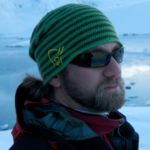How do whale scientists prepare for their trip to Antarctica?
Antarctica is one of the most incredible places on earth to see whales in their natural environment. Starting in February, migratory whale pods follow an abundance of krill to the Antarctic Peninsula, creating outstanding whale watching experiences for passengers. The abundance of whale sightings is so incredible, it is even the preferred time for marine mammal researchers to conduct science in Antarctica. This spring, a whole group of scientists from all over the world, interested in the behavior, ecology, and conservation of the world’s largest animals, will collaborate with One Ocean Expeditions. They will travel alongside passengers in Antarctica, creating an in-depth learning experience, while viewing these magnificent creatures and understanding their behaviour from the front seat of your zodiac.
Ari Friedlaender, the head of the scientific team explains how he and his colleagues prepare for their science trips:
For the past few years, myself and a number of colleagues from around the world have worked with One Ocean Expeditions to conduct research together in an attempt to understand how climate change and global warming are affecting baleen whales around the Antarctic Peninsula. We use a suite of new technology and tried new methods to study these magnificent animals. Below is a brief summary of how we are preparing for our voyages and what questions we are trying to answer:
Studying whales takes a lot of travel, a ton of gear, a handful of luck and more patience than you thought you could muster. That said, when it all comes together and we are able to be in the presence of these ocean giants, it is a magical experience and given the opportunity to work on whales in the Antarctic, there literally is nothing better.
Humpback and minke whales are the two baleen (filter feeding) whales that we encounter in the nearshore waters around the Antarctic Peninsula and we are interested in the following questions:
- How do these whales feed?
- Where do they go during the feeding season?
- What kind of ocean environment does each species associate with?
- When do they migrate?
- How big is the population?
- How healthy are the animals?
- What are the effects of climate change on each species?
Make sure you follow this blog for more ‘behind the scenes’ news on whale research and keep an eye open for: Behind the scenes Part 2
 Dr. Ari Friedlaender, Marine Biologist
Dr. Ari Friedlaender, Marine Biologist
Achieving outstanding research results in his field as a globally connected marine biologist, Ari Friedlaender’s projects are regularly supported by One Ocean Expeditions. With a Ph.D. in Ecology from Duke University and currently employed as an Associate Professor at Oregon State University’s Marine Mammal Institute, he is actively engaged with the non-science public to share the importance of his studies. Through collaborations with Geographical Societies, Smithsonian Institute, BBC, and other foundations, Ari shares information and promotes ocean conservation. One Ocean Expeditions’ passengers on board will benefit from his exceptional presentation skills, breaking down complex marine research projects in engaging and fascinating presentations.
Follow the current research results of Ari Friedlaender and his team under:
http://mmi.oregonstate.edu/btbel and mmi.oregonstate.edu
One Ocean Expeditions operates expedition cruises in remote areas of the world, with its main goal to create ambassadors for the ocean. In order to raise awareness for marine mammal research, One Ocean Expeditions calls to tag your most recent or favourite image of a whale encounter anywhere in the world #OOEwhalemigration.
There is only one ocean
Looking for more information? Our agents have extensive experience and knowledge of the areas we visit. Speak with your travel agent to learn more on how you can visit Antarctica.
Give us a call or send through an email.















